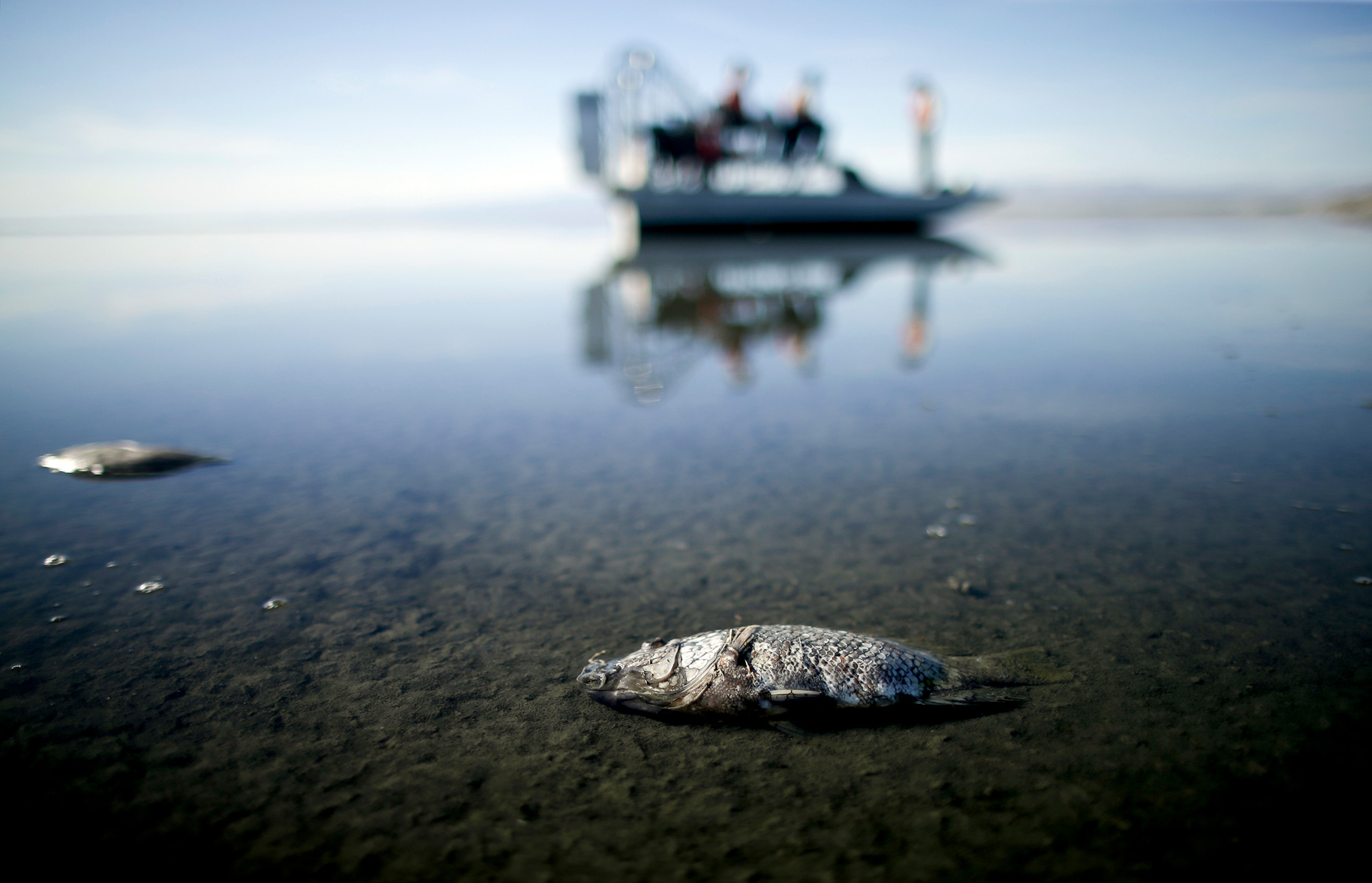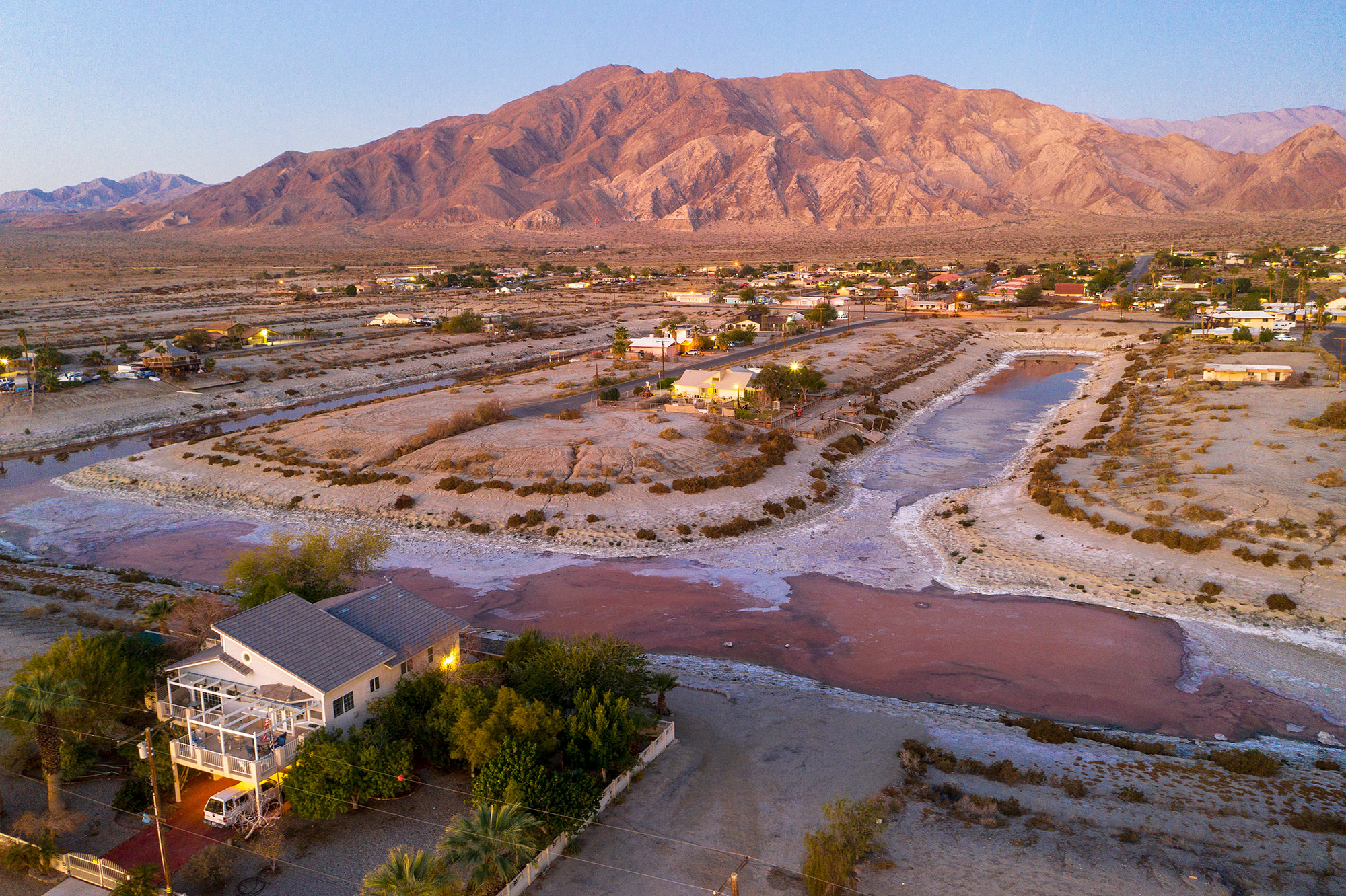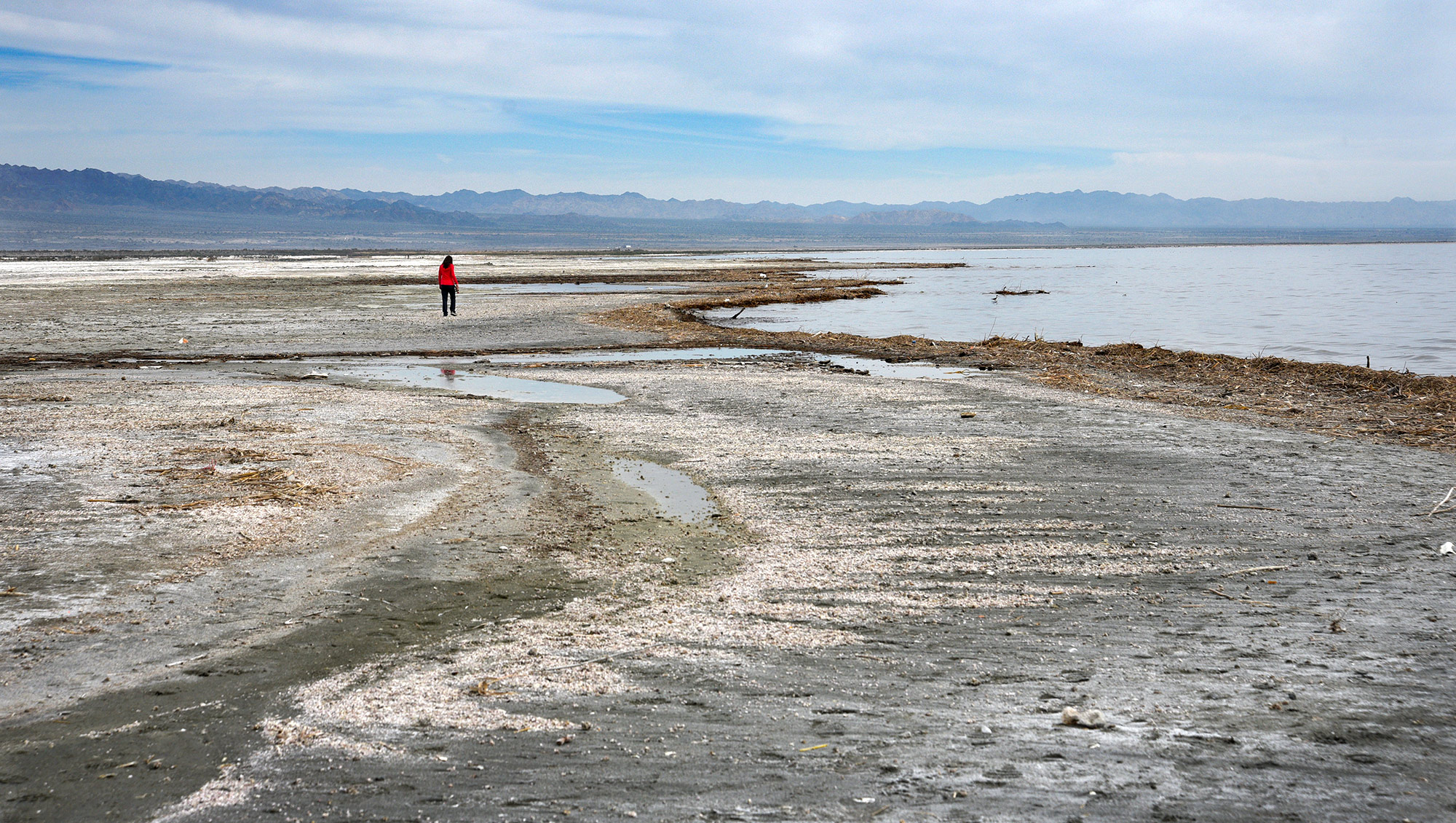This story is part of the Grist series Parched, an in-depth look at how climate change-fueled drought is reshaping communities, economies, and ecosystems.
In the spring of 1905, the Colorado River, bursting with seasonal rain, topped an irrigation canal and flooded the site of a dried lake bed in Southern California. The flooding, which continued for two years before engineers sealed up the busted channel, created an unexpected gem in the middle of the arid California landscape: the Salton Sea. In the decades that followed, vacationers, water skiers, and speed boat enthusiasts flocked to the body of water. The Beach Boys and the Marx Brothers docked their boats at the North Shore Beach and Yacht Club, which opened in 1959. At the time, it seemed like the Salton Sea, and the vibrant communities that had sprung up around it, would be there for centuries to come.
But the sea’s heyday was short-lived. Cut off from the life source that created it — the Colorado River — and sustained mainly by limited agricultural runoff from nearby farms, the landlocked waterbody began to evaporate. The water that remained became increasingly salty and toxic. Tourism dried up. The scent of rotten eggs, from high levels of hydrogen sulfide in the sea, filled the air. Fish died in droves from lack of oxygen, their bones washing up on the beach like sand.

By the 1980s, the rich, white vacationers had fled. Today, the community is made up of predominantly Latino agricultural workers who labor in nearby fields in Imperial County, among the poorest counties in California, and Indigenous tribes that have called the region home for millennia. They suffer from a unique cocktail of health threats that stem from the Salton Sea.
The waterbody is fed by about 50 agricultural channels, carrying limited amounts of water infused with pesticides, nitrogen, fertilizers, and other agricultural byproducts. As a result, the briny lake’s sediment is laced with toxins like lead, chromium, and DDT. Climate change and the prolonged megadrought gripping the western United States are only compounding these problems. The Salton Sea is projected to lose three quarters of its volume by the end of this decade; declining water levels could expose an additional 100,000 acres of lake bottom. The sea’s surface has already shrunk roughly 38 square miles since 2003.
As the sea dries and more shoreline is exposed, the strong winds that plague this part of California kick up chemical-laced dust and blow it into nearby communities, where roughly 650,000 people live. Residents complain of headaches, nosebleeds, asthma, and other health problems.
“It’s a huge environmental justice issue,” Jenny Binstock, a senior campaign representative at the Sierra Club, told Grist. “It leads to increased asthma attacks, bronchitis, lung disease.” Hospitalization rates for children with asthma in facilities near the sea are nearly double the state average.
Beyond dust, Ryan Sinclair, an environmental microbiologist at the Loma Linda University School of Public Health in California, is concerned about bioaerosols — tiny airborne particles that come from plants and animals — that can develop from algae or bacteria in the sea’s shallow, tepid waters.

“Algae produce algal toxins and bacteria can produce endotoxins,” he said, “and both of those can aerosolize and blow into nearby communities.” When researchers exposed mice to aerosolized Salton Sea water, the mice developed a “unique type of asthma,” Sinclair noted. He’s currently working with communities around the Salton Sea to measure and document levels of nutrients and algae in the water, something that is not currently being done by state or federal agencies. “Something needs to be done about this,” he said.
But solutions are limited. The dust that gets kicked up can be suppressed, to some extent, with habitat restoration projects. The first-ever large-scale restoration project for the Salton Sea, a network of ponds on 30,000 acres of lake bed, is proposed to start this year. But the project is no substitute for the obvious: The sea is rapidly shrinking and it needs a fresh infusion of water to survive. “A perfect solution for the Salton Sea — in a world where we have an abundance of water and more reliable hydrological cycles — is we would just fill that thing back up,” Binstock, from the Sierra Club, said.
But there’s no water to be had. One proposal is to ship saltwater in from Mexico’s Sea of Cortez, 125 miles south, but Binstock isn’t so sure the positives of that plan outweigh the negatives. “The tremendous investments in hard infrastructure, the disturbance of playa, and the public health and environmental impacts, the costs are just … it’s pretty bananas to think about,” she said.
Last week, an independent review panel appointed by the state to assess viable, long-term dust suppression options for the Salton Sea advised against importing water from the Sea of Cortez or any other nearby body of saltwater. Instead, the panel recommended the state build a desalination plant next to the sea to gradually filter out some of the lake’s salinity. It also suggested paying Imperial County farmers not to plant their fields, which would allow more water to reach the sea from the Colorado River instead of getting siphoned off by farmers. Both strategies would slowly replenish the sea with fresh water, revive its aquatic ecosystems, and allow the sea to “return to being a jewel in the Californian desert, and a place others will want to visit and live next to again,” the panel’s summary report said.

Mariela Loera, a policy advocate at the California-based Leadership Counsel for Justice and Accountability, doesn’t see an adequate, long-term solution to the problem. She has been doing work with communities surrounding the Salton Sea for years. Dust suppression efforts and habitat restoration projects are a useful bandaid, she said, “but ideally, there’s a long-term, clean water solution.”
Meanwhile, the Salton Sea’s copious brine presents an unexpected opportunity: a bonanza of lithium, the highly sought-after metal.
Lithium is the key ingredient in electric vehicles batteries and clean energy storage, but it is also in short supply. Lithium prices shot up some 400 percent this year as the global appetite for EVs rose and companies became increasingly desperate to find new sources of the metal. The state of California estimates that the Salton Sea has enough lithium to supply America’s entire appetite, now and in the future, and 40 percent of the globe’s demand on top of that.
Loera and other local groups recognize the importance of the sea’s lithium stores, but they say communities affected by the region’s toxic dust and algae blooms need justice before extraction can begin. “A lot of residents have questions about potential impacts,” Loera said. Lithium mining requires copious amounts of water. Would that water come from the sea’s own limited supply? And what impacts would mining have on the state’s ongoing habitat restoration and dust suppression efforts? Those questions and others raised by the community haven’t been adequately answered yet. “There’s a lack of community engagement in the decision making process to date,” she said. “We need to have that conversation: How are we going to continue this green transition, but in an environmentally just way?”



